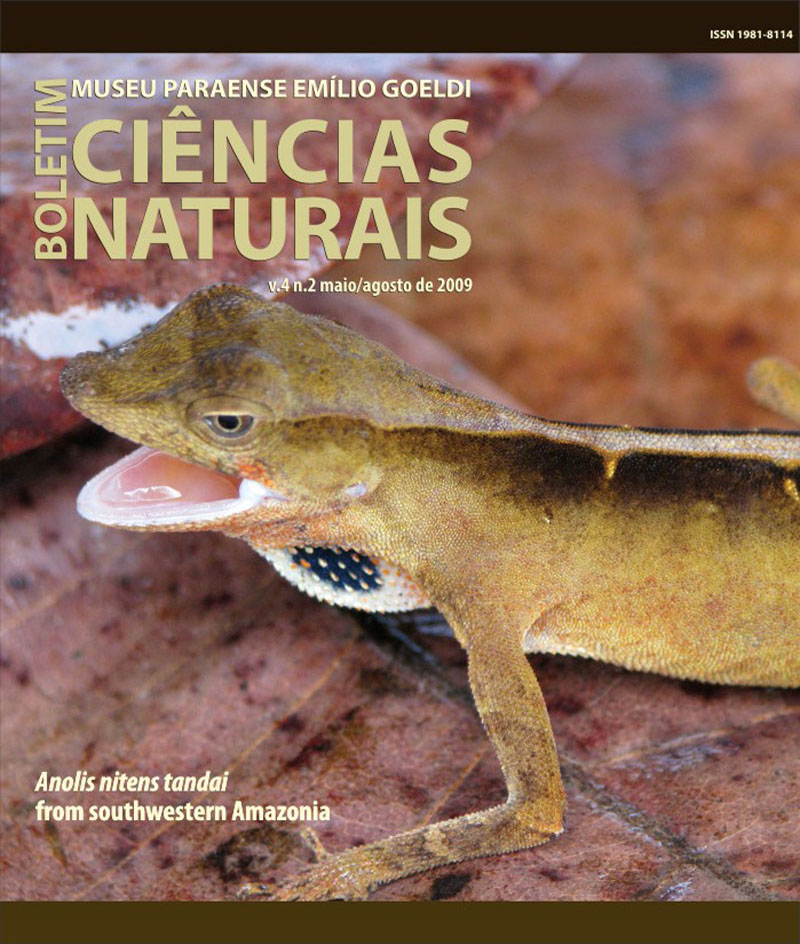Temporal variation in composition, occurrence and distribution of Copepoda (Crustacea) from Taperaçu estuary, Pará, Brazil
DOI:
https://doi.org/10.46357/bcnaturais.v4i2.661Keywords:
Planktonic copepods, Temporal variation, Estuary, BrazilAbstract
The present study aimed to investigate temporal variations on the structure of the copepod community in the Taperaçu estuary, Pará, Brazil. The physical-chemical variables and plankton samplings were gathered from January to June 2006, at three fixed stations located along this estuary. Plankton tows were accomplished using a cylindrical-conical plankton 300 μm mesh net. No significant spatial differences were observed in the abiotic and biotic parameters (ANOVA, p > 0.05). Pseudodiaptomus marshi Wright S., 1936 (11.7 ± 14.3 a 20,909.7 ± 50,527.1 ind.m-3), Acartia lilljeborgii Giesbrecht, 1889 (0.1 ± 0.2 a 1,646.4 ± 1,237.3 ind.m-3), Acartia tonsa Dana, 1849 (8.0 ± 11.2 a 4,604.2 ± 4,521.7 ind.m-3) and Paracalanus quasimodo Bowman, 1971 (1.1 ± 2.7 a 405.1 ± 424.4 ind.m-3) were the most abundant taxa, presenting densities significantly correlated with the salinity. The Cluster analysis indicated the formation of a single group comprised by the months of February, March, April and May, with January and June showing no grouping formation. This occurred due to the monthly changes in the balance of the densities observed for the four main copepod species, showing a succession process among these species.
Downloads
Published
Issue
Section
License
Publication means fully assigning and transferring all copyrights of the manuscript to the journal. The Liability Statement and
Assignment of Copyrights will be enclosed with the notice of acceptance. All the authors must sign the document and return it to the journal.








